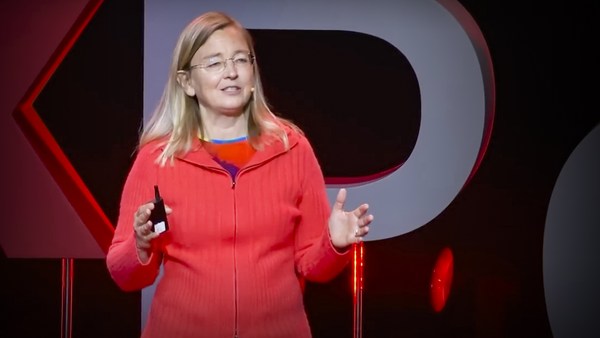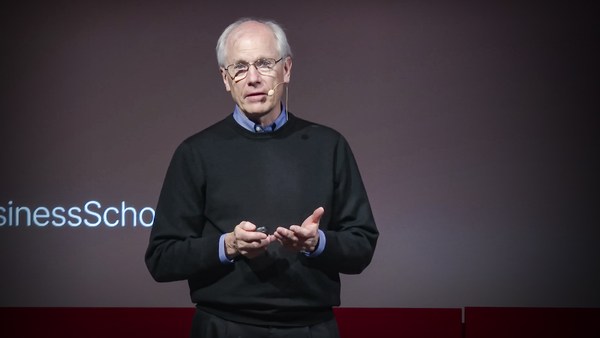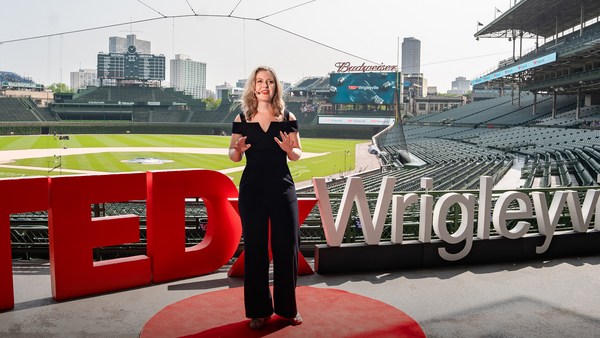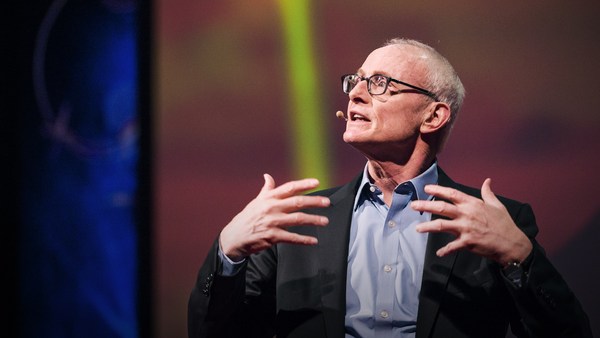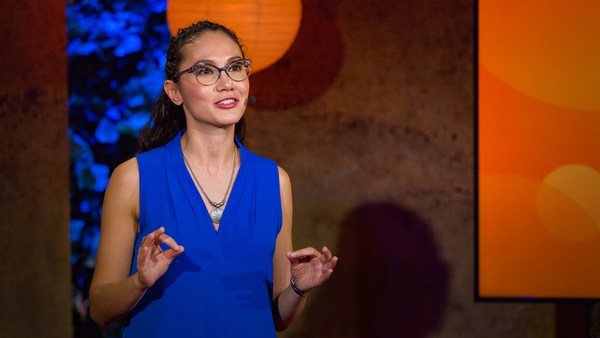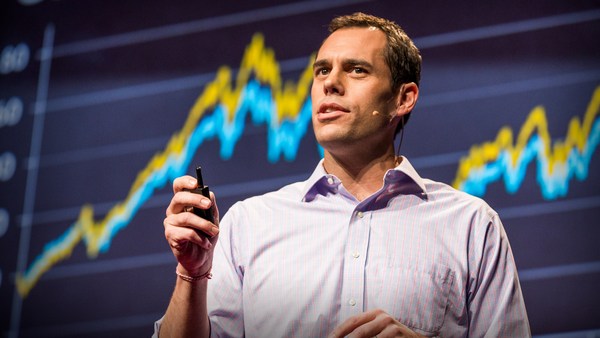Amane Dannouni: So, Anthony, you're well-known in the tech community, you're well known in Southeast Asia, but for those who don’t know you, you’re the CEO and cofounder of Grab. Grab is essentially the combination of an Uber plus a DoorDash plus a PayPal, all on the same platform. You are Malaysian-born, you're based in Singapore, you are a son, you're a husband, you're a father, you're a man of faith. Am I missing anything?
Anthony Tan: Well, first of all, I'm squirming. You know, I grew up with Asian parents, so I'm not used to such kind words. But thank you so much for that.
AD: You're welcome. So, Anthony, you've had this question a million times, but I think it's the right way to start. You cofounded Grab. Can you walk us through the initial idea that you had for the business 12 years ago?
AT: Historically, you would say, at least in the Asian, which I grew up with, methodology was really, hey, let's build a business, get rich when you're 50, 60, then contribute back and build your own philanthropy or foundation.
AD: So why not that? Because it sounds intuitive, right? So make money out of a business and then take that money and do something good at some point. Why not choose that route?
AT: I think there could be a few scenarios when that happens. One is you get tempted and don't want to give back. Two is, you actually cause negative externalities, right? You pollute, you, whatever. Because if it's all you are inspired by is profit maximization, then unfortunately, you could cause a lot of harm. The argument is, yes, you could then create a foundation to sort of solve that. But we're going to talk about, you know, when I came out, I was in [my] early 30s, and then that's going to be 30 years of damage, potentially, versus in our case, it's literally building it from day one. In fact, when we came up with the business plan, it was a for-profit social enterprise, a FOPSE, or a double bottom line business. And we actually didn't even submit it for the business plan track. We actually submitted it for the social enterprise track. That was the intent.
AD: So, Anthony, out of all the social problems that you could have solved, you focused on safety. Safety for women and children in transportation and very specifically, in Malaysia. Why is that?
AT: Safety was a very personal problem for us. My cofounder and I, Ling, she used to finish work late at night, her consulting hours, at 11pm, for example. She would then have to jump in a taxi and pretend that she's on a call with her mom just so that a driver would know she's with somebody else. And if anything was to happen to her, she could call for help. That was how she had to go through life, as a consultant, when she finished late hours. So that's one, personal.
Second is, we wanted to go for a problem that was, even yourself, if you lived in a States, you just crossed over Mexico City, you know, 12 years ago, you probably were worried to take a taxi, a random taxi as well. So it was sort of a global problem.
The third, what we felt was when you could solve the safety problem, you actually unlock a lot of possibilities. So children could go to schools without being worried. Because it wasn't a affordability issue, they were scared to take taxis or women would be scared to take a taxi to work, and then they would choose not to go to work. And that leads to all kinds of second-order effects. So we wanted to create or enable a group of people in society to whatever they can achieve and allow those opportunities to take place.
So now drivers have a lot more income. They then became susceptible to crime because they had a lot of cash, because they were now earning a lot of money, and they basically became a mobile ATM machine. And what we did then was we said, look, let's invent, at that point in time, Grabpay, which would take out cash from the driver's hands and keep them safe. And it was literally in the driver wallet, and it had ways of managing their safety.
AD: So Anthony, I do get the transition from solving the safety in transportation to ride hailing. But then you went into payment, broader financial services and even a full-fledged bank. Why don't you walk us through that story, how you went through one to the other?
AT: Sure. So we said, take cash out of the system by creating Grabpay. Now, the benefit of that was safety for the drivers, but also our customers could walk in and out even in a high-cash society like Southeast Asia. Then we said, our drivers and including our merchants actually needed more. They needed financing to expand their businesses. And that's when we created Grab lending so that they can move from not just being a driver, but they started being able to borrow, to own two or three bikes, and then they could then rent those bikes out. Then we created the digital banks because we realized, again, for them, their problem was if they were to save money in a traditional bank, they were to save at least 30 days to earn the interest for that month. What we'd created was a digital bank that allows any of our gig workers to earn interest on a daily basis. So even if they can afford to save money for 10 days, they would accrue interest for those 10 days. So it was very catered for a segment of people which are our drivers and our long-tail merchants, whether they sell, you know, bobo ayam or chicken porridge at the sides of the street in Jakarta. And that was a common thread, was serving this segment. That's how we went across services.
AD: Got it. A second way you scaled the platform, so we talked about different services building on top of each other. You also went for a geographic scale. You are now present in eight different countries. For those who don't know Southeast Asia, it's a very diverse place. Singapore is not Malaysia is not Philippines. And the GDP per capita is not the same, the languages are different. That also was a conscious decision. Why did you choose to scale across countries in the region? Because you could have stuck to “I’m solving the safety issue in Malaysia, and I'm solving the other issues, why don't I solve them in Malaysia?" You deliberately wanted to have such a broad scope that covers I think, if I'm not mistaken, something like 650 million people across the eight countries. Why is that?
AT: So first of all, again, focus on what was a problem that could be solved. That's one. Two, we already had a solution, it was a proven solution that can scale across countries. Third was, when we built this business as a double bottom line business model, we knew that we needed scale and velocity by design. Scale and velocity allow for a few things. One, when you have scale, it allows for a lot of supply. Because customers don't want to wait two hours for a car. They want it in five minutes. Scale allows that. Velocity allows for very high density of bookings, or, say, in our case, for food business, it allowed for batching. And batching is very important because one, as a double bottom line business, you can drive to lower cost in a lower-margin business to serve the bottom of the pyramid. Sustainably.
AD: I remember initially for you, you didn't approach, you know, random people who then can drive cars. You approach the taxi drivers. That's a very important design choice. Can you talk us through why you made that choice?
AT: You're right. The design choice we chose was to go with taxi drivers and then even go even lower than that. To go to tuk tuks, to go to two-wheels, right? To go to, in Philippines, they've got habal habal, right? Really low-cost ways of mobility. Versus, if you look at what our other peers did in more developed countries, they took black cars as their first wave of attack.
Now two different design choices. Number one was we wanted to be a real mobility solution for the masses. Again, why? Because the beginnings was always about how might we serve the bottom of the pyramid. So it was, if we can serve a ride for 20 cents, we'll try and get that versus a 200-dollar airport ride. So that was a difference. By design, it was built to serve the bottom of the pyramid. Yet you had to be profitable, yet you had to be sustainable.
The second design choice then was we said how do we then scale very quickly? And that's when we designed ways of getting driver, get driver. We designed ways of building it. So in the early days, it wasn't built on an iPhone. Our peers built it on iPhone. We went for a 2.25 inch screen Samsung at that time, Samsung was the earliest in Android, and we bet on Android because it was the lowest-cost smartphone at that point in time. Again, design choice so that we could serve the bottom of the pyramid and be sustainable at the same time.
AD: Did you ever think in hindsight that if I have done it differently, it might have scaled faster than the time it took you to convince the taxi drivers?
AT: I think that's a fair question, because the traditional sort of, you know, let's call it "Valley-based" start-up way is, look, I step on toes, I do whatever it takes. Just move, hustle, hustle and move as fast as you can, right? Even if you break things, it's OK. We took a different approach again, because we chose mobility as our first design choice, we knew it was regulated in the region. And because we chose taxis as our first vehicle type or mobility type, we knew that was regulated. So we knew we had to work with the regulators. And yes, we were running fast. So maybe it's less of stepping on feet but more pulling them along. We said, let’s cocreate this new vision of mobility together with governments. And when we became part of their developmental agenda, it actually supported us because they said, maybe the counterfactual could have been, "Hey, you could have moved so much faster in the beginning." Maybe. But I would say I would have been jammed then, because it's a highly regulated industry. Instead, I may have moved slow in the beginning, but in the long run, we actually outpaced and, as you know, we actually fought Uber head-on, for many years, and we won.
AD: So Anthony, we talked about the double bottom line business, and it makes a lot of sense. Now there is economic, there is social. But we're increasingly talking about the third bottom line which is environment. In your business model, is there space for that third bottom line to take as much space as the second?
AT: Absolutely. You are absolutely on point, because we moved from a double bottom line to a triple bottom line. Again, it wasn't altruistic. I'll be up-front. It was because when we saw that climate conditions actually impact economic conditions of the business, when there's a flood in Manila or in Jakarta, our drivers can't move. And when they can't move, there's no business. Our business is all about flow. And if there’s no throughput, and we’re not delivering food or not getting customers from A to B, there's no business. Drivers don't earn their income. It goes against our mission. So very well, we had to protect the environment so that the economic conditions continue so that we can serve our mission of empowering everyday entrepreneurs.
Now, how do we do it? I think number one, we first set a goal. So by 2040 we're committed to net carbon neutral. Second, we identify what is creating the most carbon that you might say is a proxy to deterioration of environment is our fleets because we are in the business of moving things or people. So the third was then how do we bring our fleets to reduce a big chunk of their carbon? It's by moving them into some form of electrification or zero emission. So some progress there. Number one is, we've invested over 200 million US dollars in low-emission vehicles and electric vehicles. Two, in Singapore, for example, something like 50 percent of all our deliveries are done zero emissions. That means by walkers, by personal mobility devices that are electric-powered, these are very efficient. Third is, in Indonesia, we actually have racked up the most number of electrified miles across all our mobility and deliveries across our two-wheel mode of transport. But the honest truth is, we're not there yet. We are very much a work in progress. So today we're working closely with governments. I was just with another potential partner about charging point operators and making sure that EV infrastructure is working out and incentives on how to get the initial cost of investment -- because EVs, the total cost of ownership may be good, but the initial investment tends to be higher. So how do we facilitate that with governments? And then how do we continuously build our financial services so that we can help mitigate that high initial cost of investment? So all in all, I would say we are still on this journey. We haven't cracked the code, but we have clear progress on it, and we’re going to hit our final goal. AD: It's completely fair. This is, I think, a journey where many, many of us are still trying to figure out. And it's slightly different from the social question because it's by definition global. And it's very hard to fight it only in certain corners.
AT: But we all have to do our part.
AD: Absolutely. Let me ask you a final question, Anthony, to end this, if you have a message for entrepreneurs out there, what would it be?
AT: Amane, if you're an entrepreneur, I would say start a double bottom line or triple bottom line business. And why is that? Number one is, I really believe that there are real social problems out there. One of [those] social problems, for example, that we are really looking at is this rich and poor divide. And if you look at, say, in Southeast Asia, according to World Bank, this rich-poor divide is actually getting worse in each country, in Southeast Asia especially. And for us, we had that calling, that calling to address this divide. And why? Because we saw that if the rich-poor divide gets worse, we can see massive social disruption take place. So for us, we don't want to wait for that to happen in this part of the world. We want to address that up front. And the best way to address that up front is to say: How can we uplift the bottom of the pyramid and help them rise? And we felt that this calling is so deep. And frankly, as an entrepreneur, you need to know that the hours you're going to be putting in [are] going to be so significant, and the borders between your private life and your public life is completely going to merge. So you better do something that you love, that you are absolutely convicted on.
In my case, I felt that this was literally a calling from up above. And when you feel that it's a calling from up above, you have a competitive advantage because you're willing to put in hours that are many more than anybody else. You're going to feel that you're going to be so proud, even whether you succeed or you fail. You can say to your children's children that: “I did this because the intent was to solve a real societal problem.” And that is something that I would really encourage all entrepreneurs to fight for, their own calling.
AD: Anthony, on that note of passion that I love, thank you very much.
AT: Thank you.
